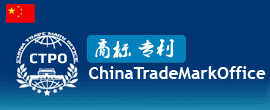
| This site in other countries/regions: |
| English 日本語 한국어 Deutsch Français Русский Italiano Español Português |
 |
||
10th China Int'l Copyright Expo opens in Qingdao, China's ShandongA recent study by the German Economic Institute has again thrust Europe's reliance on imports for its medicines into the spotlight. Research showed that 68 percent of the active pharmaceutical ingredients (APIs) in the European market come from Asia, with China accounting for 24 percent and India 37 percent, according to the institute's latest study released on Monday. The data has sparked discussion and concern among some in Europe about supply chain risks, which some media outlets have described as "very high." As early as 2020, a study by German generics lobby Pro Generika drew a similar conclusion that two-thirds of the APIs needed to make generic drugs in Europe were manufactured in Asia. This indicates that the close ties between European pharmaceutical companies and Asia's supply chains are not accidental but rooted in profound industrial logic. The worry over "risks" is essentially a misunderstanding of the nature of the global pharmaceutical industry's division of labor. Pursuing a "decoupling" or breaking these chains will not reduce risks; instead, it will plunge Europe into a greater predicament. From a macro perspective, the global pharmaceutical industry's division of labor is a rational choice made by entities based on their comparative advantages under market mechanisms. Europe, leveraging its strong scientific research capabilities and patent protection system, has focused its efforts on the research and development (R&D) of original drugs, an area requiring massive capital investment and offering higher profit margins, and the production of high-end pharmaceuticals. This specialization has produced global pharmaceutical giants that dominate the high-end segment of the value chain. At the same time, the migration of API and generic drug production to Asia reflects rational economic choices. Asian countries such as China and India, with their increasingly sophisticated chemical industry foundations, mature production clusters, large pools of skilled engineers, and significant economies of scale, have successfully undertaken this industrial transfer and, in the process, established themselves as core hubs for global API and generic drug supply. These advantages weren't built overnight but through decades of systematic development and investment. The resulting supply chain cooperation stands as a classic example of complementary strengths - combining European innovation leadership with Asian manufacturing excellence. This kind of complementarity is not unique to the pharmaceutical sector; it exists across many fields. Despite this clear complementarity, some in the West, alarmed by the so-called risks, have even gone so far as to push for "decoupling" and supply chain breaks in the name of risk reduction. In reality, such attempts to split the global supply chains will not only fail to solve the so-called risks but will also exacerbate their own industrial dilemmas. The industrial and supply chain restructuring proposed by some in the West is essentially built on wishful thinking that contradicts objective economic laws. It deliberately ignores or underestimates an irreversible macro trend: the continuous improvement of manufacturing capabilities in developing countries, particularly China. Far from enhancing security, this approach may leave Western economies in a more disadvantaged strategic position in future global competition. The West's "decoupling" or "de-risking" strategy is fundamentally flawed: It attempts to use a geopolitically motivated approach to intervene in the dynamic global industrial evolution driven by markets and innovation. Proponents of this approach want to contain others' development while still expecting the efficiency and dividends of the global division of labor; this is a clear contradiction. Developing nations' industrial advancement cannot be held back by geopolitical tactics, and any such attempt will only cut Western economies off from the world's most vibrant innovation hubs with the most economic vitality. True supply chain resilience doesn't come from artificial localization but from building diversified, collaborative networks that leverage global comparative advantages. While maintaining its advantages in high-end R&D, Europe should focus more on how to enhance supply chain resilience through cooperation and engage in global industrial collaboration with a more open stance. Rather than retreating behind protectionist barriers, Europe would be better served by deepening engagement with Asian partners: Jointly developing quality standards, enhancing regulatory cooperation and fostering innovation partnerships that strengthen the entire industrial ecosystem. (Source from People's Daily Online) |
|
About us |
Contact us |
Fee FAQ |
Laws |
Marks |
Online billing
ChinaTradeMarkOffice.com Site:
International -
日本語 -
한국어 -
Deutsch -
Français -
Русский -
Italiano -
Español -
Português |